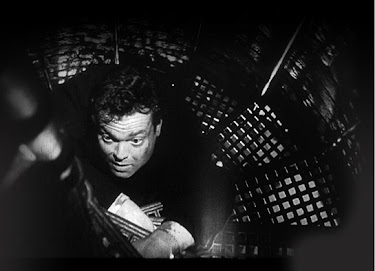Directed by: André De Toth
Written by: Luke Short (novel), Jack Moffitt, C. Graham Baker, Cecile Kramer (writers)
Starring: Joel McCrea, Veronica Lake, Don DeFore, Donald Crisp, Preston Foster, Arleen Whelan, Lloyd Bridges I hadn't realised that Lake was so incredibly short. Having only seen her in three films opposite Alan Ladd, whose comparatively small stature made him an ideal screen partner, it was surprising to see the 6' 3" Joel McCrea positively tower above her. This must have caused headaches for the cinematographer who was valiantly trying to frame both stars into every shot. Nevertheless, Lake doesn't let her petite size get in the way of a solid performance, and, indeed, her character is surprisingly malevolent. Borrowing a leaf from the femme fatales of the film noir style, which was in full swing by the late 1940s, Lake's Connie Dickason is a feisty customer, a pugnacious ranch-woman whose determination to upset the balance of power in her small western town turns her as nasty as the male oppressors whom she so despises. She deliberately breaks the law to achieve her self-righteous ends, and attempts to rope men into her scheme through the promise of sex. Yet Connie remains a moderately sympathetic character.
I hadn't realised that Lake was so incredibly short. Having only seen her in three films opposite Alan Ladd, whose comparatively small stature made him an ideal screen partner, it was surprising to see the 6' 3" Joel McCrea positively tower above her. This must have caused headaches for the cinematographer who was valiantly trying to frame both stars into every shot. Nevertheless, Lake doesn't let her petite size get in the way of a solid performance, and, indeed, her character is surprisingly malevolent. Borrowing a leaf from the femme fatales of the film noir style, which was in full swing by the late 1940s, Lake's Connie Dickason is a feisty customer, a pugnacious ranch-woman whose determination to upset the balance of power in her small western town turns her as nasty as the male oppressors whom she so despises. She deliberately breaks the law to achieve her self-righteous ends, and attempts to rope men into her scheme through the promise of sex. Yet Connie remains a moderately sympathetic character.
If one considers Ramrod (1947) as one of the first film noir/westerns, then Connie is the ill-fated hero who knowingly chooses a path of dishonesty, and is condemned by it. McCrea's Dave Nash, on the other hand, represents the Western side of the story, a washed-up cowboy who, against all odds, chooses the path of nobility, pursuing justice strictly through honourable (and legal) channels. This blending of genres yields the film an interesting thematic tone, I think, though the story itself is so familiar that there are few surprises to be had along the way. Upon hearing of her deception, Dave shuns Connie's affections, instead choosing to marry the passive but sincere Rose (Arleen Whelan), the epitome of a dependable house-wife {I'd seen Whelan before, in the William Powell comedy The Senator was Indiscreet (1947), though I don't remember the specifics of her role}. Connie is left, alone and rejected, to ponder the men whose deaths she inadvertently orchestrated. True to the film noir spirit, she is offered no redemption.
6/10
Currently my #15 film of 1947:
6) The Lady from Shanghai (Orson Welles) *
7) They Won’t Believe Me (Irving Pichel) *
8) The Fugitive (John Ford, Emilio Fernández)
9) The Woman on the Beach (Jean Renoir) *
10) Lady in the Lake (Robert Montgomery) *
11) Lured (Douglas Sirk) *
12) Bush Christmas (Ralph Smart)
13) Song of the Thin Man (Edward Buzzell)
14) The Senator Was Indiscreet (George S. Kaufman)
15) Ramrod (André De Toth) *
 Pat O'Brien is typically known for playing priests, the level-headed foil for James Cagney's explosive gangster. In other words, he's usually the least-interesting character in the film. Crack-Up (1946) marks a welcome change-of-pace for the actor. No longer is O'Brien the calm, collected cleric, but a confused art critic at the end of his rope, doubting his own sanity as he battles murder and conspiracy. He perhaps isn't perfect for the role – the film's lurid moments would have been even more lurid had the lead actor been able to act more deranged – but O'Brien receives good supporting back-up from Claire Trevor, Herbert Marshall and Ray Collins. Director Irving Reis (best known for his "Falcon" series, though he also co-directed the annoyingly manipulative Hitler's Children (1943) with Edward Dmytryk) does well to develop the film's mood, not afraid to dabble in a bit of surrealism to help translate the mental confusion and degradation of his main protagonist. There's also a little Freudian psychoanalysis in there, as was popular at the time, but the distraction it causes to the story is only an afterthought.
Pat O'Brien is typically known for playing priests, the level-headed foil for James Cagney's explosive gangster. In other words, he's usually the least-interesting character in the film. Crack-Up (1946) marks a welcome change-of-pace for the actor. No longer is O'Brien the calm, collected cleric, but a confused art critic at the end of his rope, doubting his own sanity as he battles murder and conspiracy. He perhaps isn't perfect for the role – the film's lurid moments would have been even more lurid had the lead actor been able to act more deranged – but O'Brien receives good supporting back-up from Claire Trevor, Herbert Marshall and Ray Collins. Director Irving Reis (best known for his "Falcon" series, though he also co-directed the annoyingly manipulative Hitler's Children (1943) with Edward Dmytryk) does well to develop the film's mood, not afraid to dabble in a bit of surrealism to help translate the mental confusion and degradation of his main protagonist. There's also a little Freudian psychoanalysis in there, as was popular at the time, but the distraction it causes to the story is only an afterthought.




_poster.jpg)

